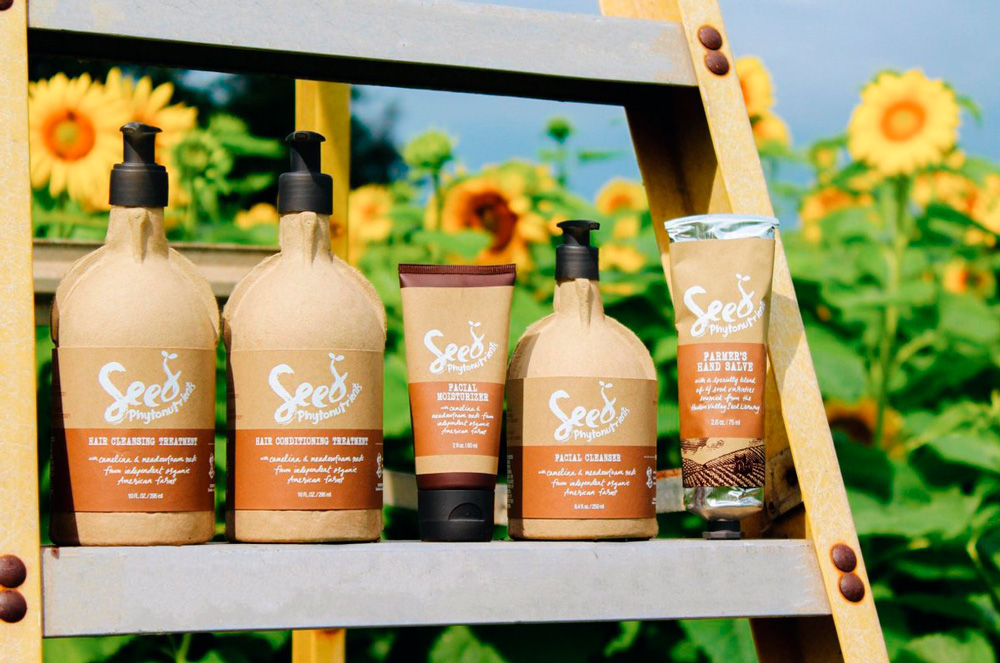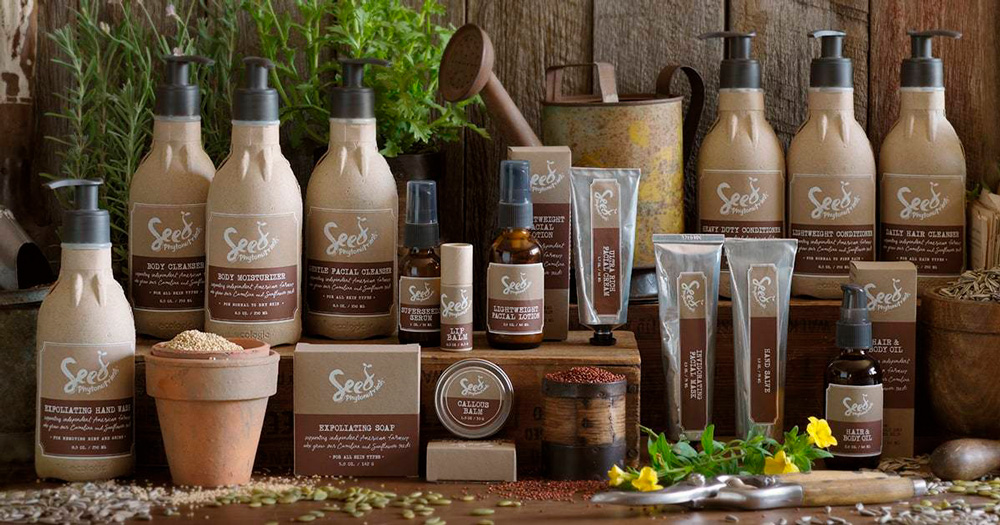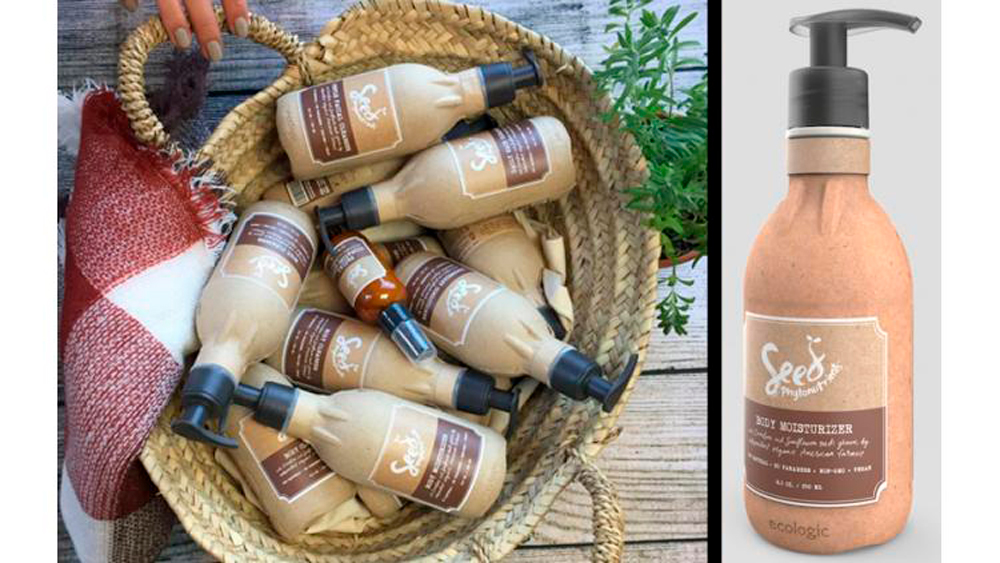 [social_warfare]
[social_warfare] Packaging technology has created a water-resistant paper bottle shell. Products are contained within a recyclable inner plastic liner made with mostly post-consumer recycled content.
Sustainability is in the DNA of Seed Phytonutrients, shaping everything from the relationships with organic farmers to its earth-friendly packaging design. A division of L’Oréal USA, Seed Phytonutrients is demonstrating its commitment to sustainable packaging with a recycled, recyclable, compostable, paper-based pump bottle that was designed for use in the shower. The beauty brand, which launched on April 22 (Earth Day), 2018, sells skin- and hair-care products.
L’Oréal USA, in partnership with Ecologic Brands, designed the unusual personal care packaging, which is a next-gen take on Ecologic’s original pouch-in-a-paper-shell concept. (Think Seventh Generation detergent, circa 2011).
Seed Phytonutrients’ 250-milliliter bottle differs from that older package structure in some important ways. The external shell is still 100% paper-based and is recyclable and compostable. But the two halves of the shell are no longer glued together. Instead, a system of interlocking tabs binds the two halves mechanically, producing a stronger outer structure. The shell is made using corrugated board recycled from a L’Oréal USA distribution center.
The bottle is decorated with a pressure-sensitive label, and “our labels are paper, so they can be composted and recycled directly with the bottle,” says Jennifer Woodworth, assistant vp of operations at Seed Phytonutrients. Fort Dearborn Co. supplies the labels, and AptarGroup supplies the pumps.
Rather than incorporating a film pouch, Seed Phytonutrients’ package uses a lightweight, thin-walled, blow-molded liner. This rigid monopolymer liner is made using 80% post-consumer recycled high-density polyethylene (HDPE) and is recyclable. As the consumer dispenses the product, the liner collapses; the airless package enables almost full evacuation of the product.
A noteworthy functional improvement in the package is water-resistance, achieved by mixing proprietary minerals with the paper fibers and by using heat and pressure to bind the fibers during production of the shells.
The mineral component “should not affect recycling, as it’s not a coating and is already present in many paper products that are recycled. We are in the process of confirming compostability,” says Julie Corbett, founder and president of Ecologic Brands.
Each Seed Phytonutrients package contains a packet of seeds inserted between the liner and the shell. “We hope to help highlight the importance of preserving seed diversity in addition to providing our customers with a fun surprise that they can actually plant,” says Brad Farrell, vp of global marketing at Seed Phytonutrients.
Ecologic plans to roll out a line of stock bottles featuring the revamped package structure. The first stock package, a 500-mL bottle, will launch in August 2018, followed by larger sizes in 2019. “We are transitioning out of the glued flanges,” Corbett says. “This will take approximately 24 to 36 months.”
Farrell, Woodworth and Corbett jointly field some questions about the Seed Phytonutrients package.

What attracted the brand to Ecologic’s package concept?
Farrell: In supporting our mission of leading environmental sustainability, we wanted to take sustainability to the next level in the beauty industry. We were inspired by Ecologic’s commitment to reduce waste by using paper versus plastic. This is important because while over 90% of paper is recycled, less than 30% of plastic is recycled. With our new paper bottle, we use 60% less plastic than a traditional shampoo bottle. This is a giant leap forward to help reduce the amount of waste that our industry creates. Plus, we love the look and feel, and we knew our customers would, too.
How is the package filled?
Woodworth: Our bottle is designed to perform on a high-speed filling line. Very few modifications to equipment were required. One of the significant differences between this bottle and a traditional cylindrical bottle is the seam on the side; we did need to develop a method to orient the bottle and facilitate label application.
How much paper material for the package is coming from L’Oréal?
Woodworth: Just last month we dropped off 7 tons of corrugate from a L’Oréal USA distribution center, which converts into 70,000 bottles, and almost seven months of supply.
Where is the L’Oréal distribution center located?
Woodworth: Our first partnership was with the L’Oréal USA distribution center in Valencia, Calif., which is approximately 300 miles from the Ecologic manufacturing plant.
Is any fiber material coming from other sources?
Corbett: At this point, a lot of the material is from L’Oréal’s distribution center. 30% of the bottle is made from ONP (old newsprint), which is sourced from other channels.
Are the pumps recyclable?
Woodworth: While pumps are a challenge, we are constantly looking at ways to potentially reuse or repurpose them.

Article by Packaging Digest
Credit to Packaging Digest